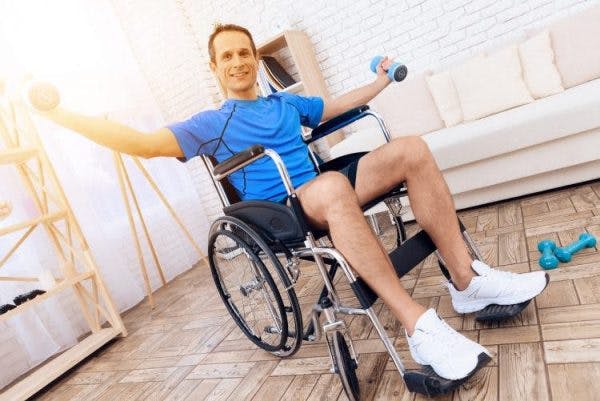Can acupuncture be an effective form of treatment for individuals who have sustained a spinal cord injury?
Acupuncture is a traditional Chinese practice that involves placing thin, hair-like needles into specific locations on the body called acupoints.
It’s primarily used to reduce pain but can also provide relief for many other conditions including anxiety, depression, and insomnia. These complications are fairly common amongst individuals with spinal cord injuries, which makes acupuncture worth considering.
This article will explain how acupuncture can help survivors of spinal cord injury with recovery and whether it can sufficiently rival conventional medicine.
Does Acupuncture for Spinal Cord Injury Work?
The appeal of acupuncture is that it’s simple, comparatively inexpensive, and has few risk factors compared to conventional medicine.
Although the exact mechanisms underlying acupuncture have yet to be fully understood, there is evidence to suggest that selectively puncturing the skin can initiate a chemical response.
It’s believed that the body has a natural flow of energy called qi. When qi gets congested, individuals become susceptible to pain, stress, and disease. Acupuncture helps to promote the body’s natural healing ability by clearing the congestion.
A more scientific way to describe this process is that puncturing the skin stimulates the nerves and causes the immune system to deliver small, inflammatory responses throughout the body to promote the healing process.
Similarly, the stimulation can trigger the brain to release neurotransmitters that regulate stress hormones to help you feel relaxed and relieve pain.
Although puncturing the skin may sound painful, generally individuals experience very little discomfort during acupuncture treatments. Some may prefer to try acupressure, which is a similar treatment following the same principles as acupuncture, although only pressure is applied to acupoints rather than needles.
It’s important to understand that with a spinal cord injury, sensory impulses from areas innervated below the level of injury may not be able to reach the brain. Individuals with less severe spinal cord injuries have more spared neural pathways that can deliver messages between the brain and body. As a result, more positive results of acupuncture treatments have been observed in individuals with incomplete SCIs than those with complete SCIs.
Now that you understand how acupuncture promotes healing, let’s discuss why there’s so much skepticism towards it.
Understanding Skepticism Towards Acupuncture

Generally, people fall within the two extremes of believing acupuncture is transformative or a complete gimmick.
It’s difficult to scientifically test the effectiveness of acupuncture because there are limited ways to create a control group: patients can tell when they’re being poked by a needle.
Even with sham acupuncture (which involves pretending to poke the patient or poking them in incorrect acupoints), people claimed to feel better. This suggests that acupuncture either has a significant placebo effect or that the location of the stimulation does not matter.
Other factors that make it challenging to determine the effectiveness of acupuncture are the small sample sizes and lack of standardization in studies completed.
That being said, many people express confidence in the healing effects of acupuncture, which can explain why it has stood the test of time for over 4,000 years.
Up next, we’ll discuss another major benefit of acupuncture: minimal side effects.
Side Effects of Acupuncture for Spinal Cord Injury
Many people are open to acupuncture because it’s generally safe and has minimal side effects compared to pharmaceuticals. Especially when performed by a certified practitioner, the risk of complications is very low.
Adverse side effects of acupuncture include:
- soreness
- bruising
- fatigue
- nausea
- bleeding
Conventional treatments for pain after spinal cord injury include the use of opioids, antidepressants, and anticonvulsants. While they can be effective, they typically have harmful side effects such as addiction, tolerance, constipation, liver damage, and sedation.
In the following section, we’ll discuss how to enhance the healing effects of acupuncture.
Electroacupuncture for Spinal Cord Injury Rehabilitation

Electroacupuncture involves adding an electric charge to the needles to enhance their effects. Not only does this intensify the treatment, but it also reduces the time necessary to complete the process.
Similar to electrical stimulation, electroacupuncture can help excite neurons located below the level of injury to improve functional outcomes.
For example, this study observed the effects on electroacupuncture in 100 individuals with spinal cord injuries with similar sensorimotor outcomes. Half received standard rehabilitation practices while the other half received a combination of standard practices and electroacupuncture. After one year, the group who received electroacupuncture demonstrated significant functional improvements compared to the control group.
It’s also suggested that electroacupuncture may be able to reduce spasticity in SCI patients. The amplified stimulation can help reduce the excitability of motor neurons that cause involuntary muscle contractions.
Acupuncture for SCI: Key Points
While scientific evidence and standardization for it are lacking, acupuncture has been practiced for thousands of years and is still a very popular form of therapy worldwide.
Because acupuncture is relatively affordable and has minimal side effects, it may be worth trying before committing to more conventional forms of treatment like medication or surgery.
Hopefully, this article helped you understand how acupuncture can help individuals with a spinal cord injury manage their pain and improve their mobility. Good luck!











